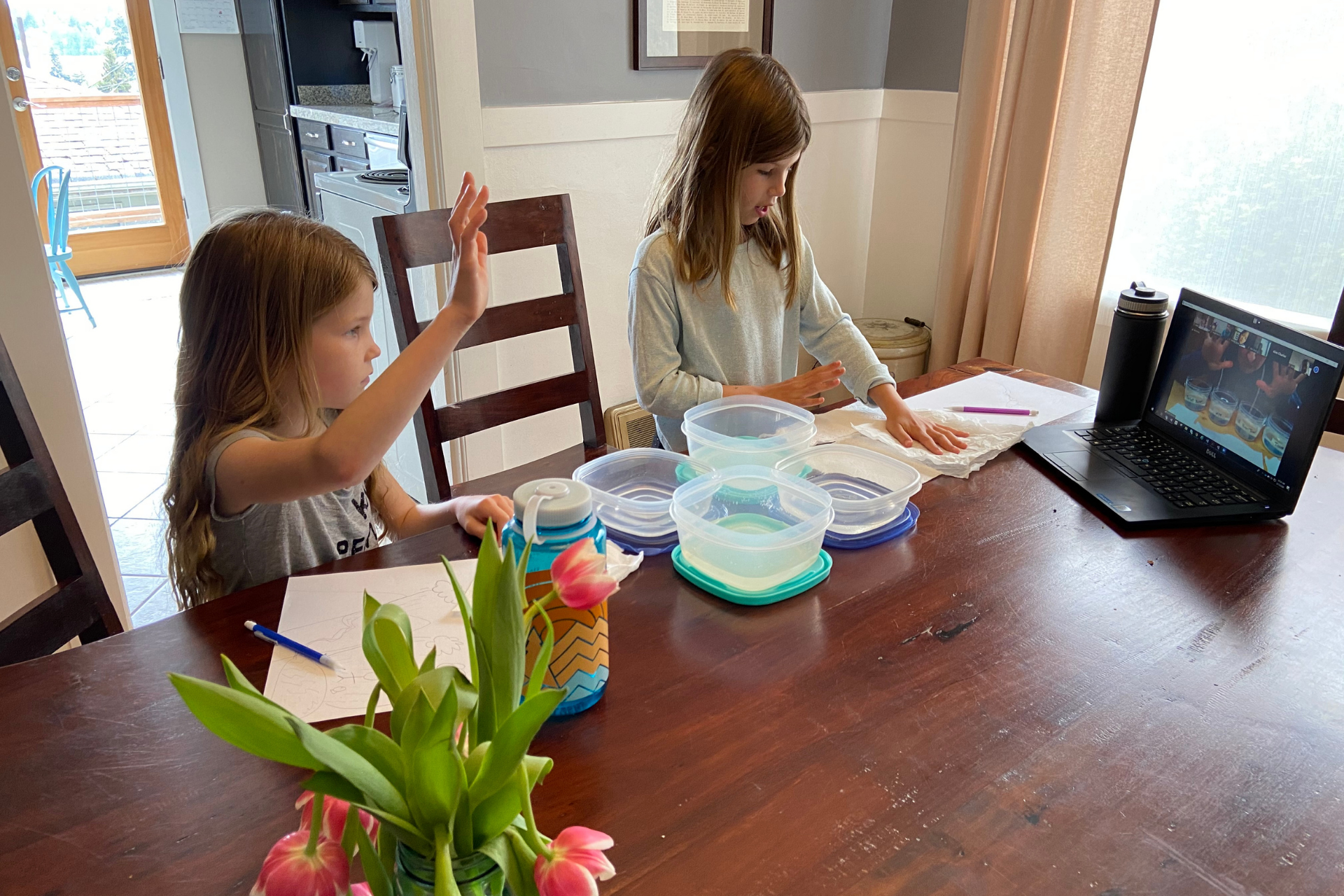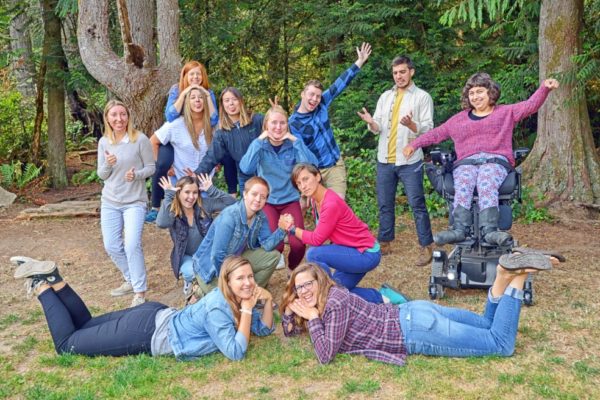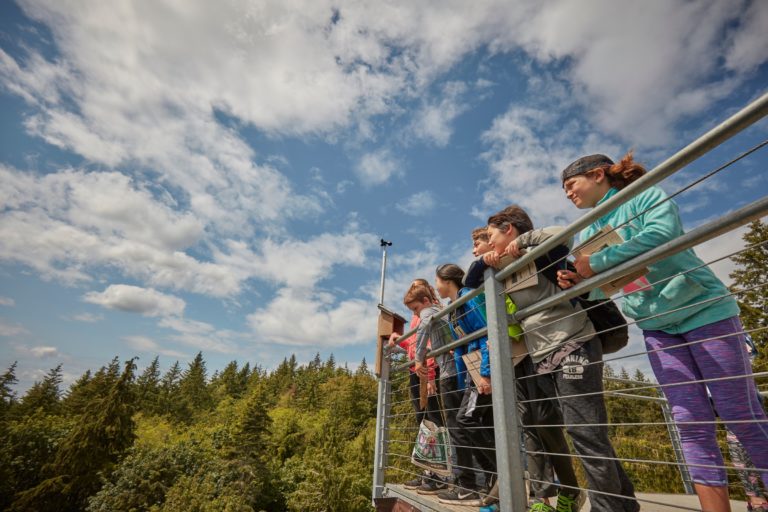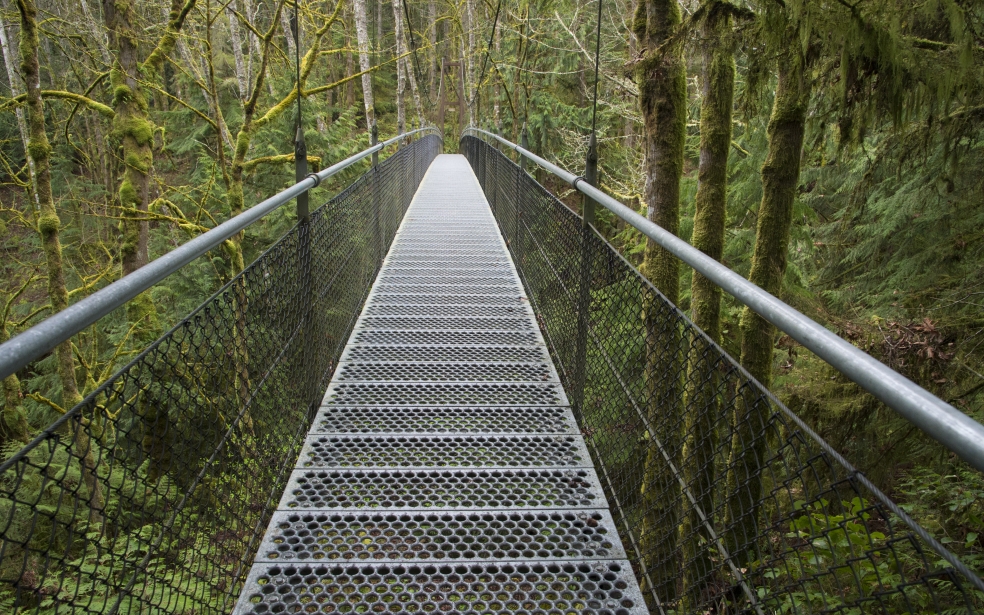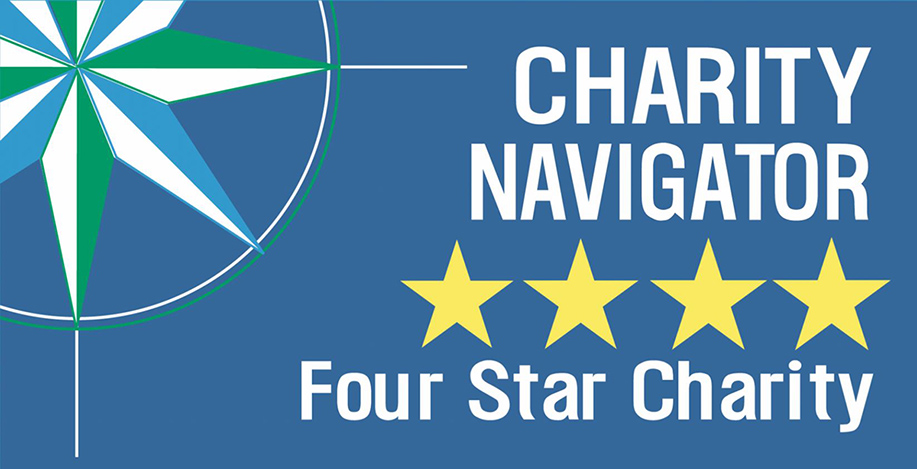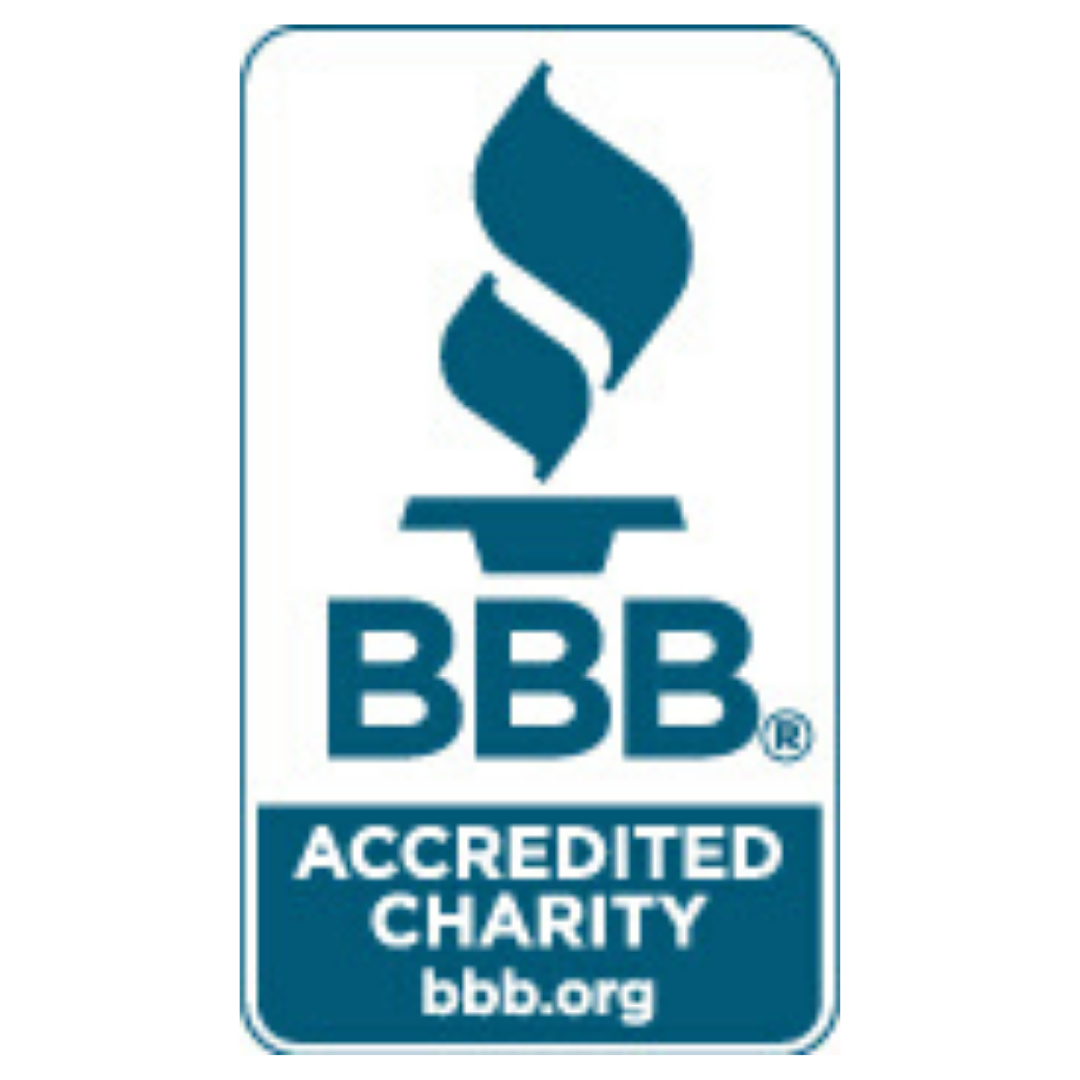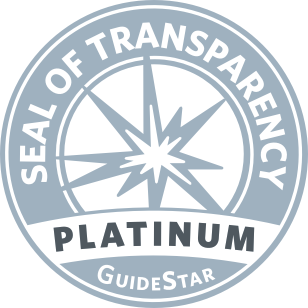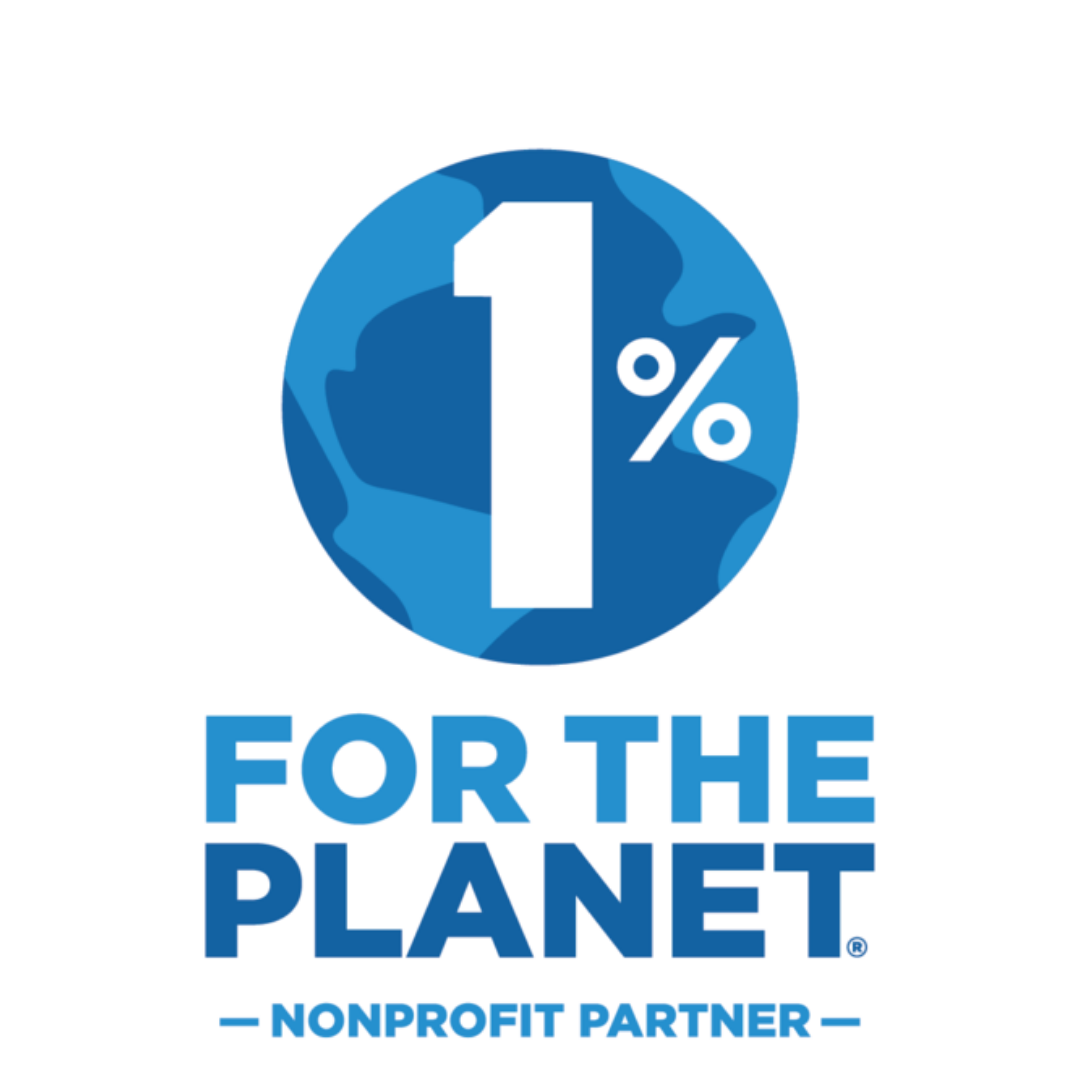On the South end of Bainbridge Island, just northeast of Blakely Harbor is a “School…
COVID-19 is widening educational inequities more than ever. Here’s how we’re helping teachers address them.
During this time, our professional development workshops and courses have become spaces for teachers to develop strategies for navigating the unpredictable landscape of remote teaching and addressing the widening inequities facing their students and communities.
We talked with our Urban School Programs Educator, Laura Brown, who helps facilitate these workshops and courses, to learn more about the issues facing teachers, students, and families today; the importance of incorporating multiple ways of knowing into science education; and IslandWood’s role in supporting teachers as they work to embed equity in their virtual classrooms.
__________________
While inequities in education have always existed, COVID-19 has intensified many of them. What are some of the biggest issues facing students and their families now?
As we know, COVID-19 has ushered in a national economic depression, to which Washington state families are not immune. Job loss and housing and financial instability already affect students’ capacity to thrive in school—add the challenges and barriers inherent to remote learning and you have an ever-widening opportunity gap between students on the basis of race and class. While some students have been socially and physically resourced to adapt to the changing landscape, others are being left further and further behind.
Teachers in our workshops have identified language barriers, lack of access to technology and WiFi, lack of affordable transportation to outdoor spaces, and parents who work during the day or are otherwise unable to support students at home, as the most salient inequities plaguing their classrooms and districts.
What are a few ways that teachers can work to address these inequities with their classes? What approaches have teachers brainstormed in our workshops and courses?
Some solutions to these inequities are technical—like translating assignments into Spanish or providing district-wide laptops—while others are more adaptive and complex. Teachers in our workshops have been making efforts to connect with their families like never before, through one-on-one conversations, regular surveys and very intentional relationship building. They’ve also identified a desire to interrogate their curriculum and ask critical questions like, “Which students have the privilege to have science learning prioritized?” With COVID-19 and the fallout in schools, those patterns are becoming clearer, and teachers are better able to resist harmful norms that have existed in education for centuries.
What are strategies that we share with teachers for incorporating “multiple ways of knowing” into remote science teaching? (Connecting Indigenous ecological knowledge and Western scientific practices, for example.) Why is this such an important practice? What does this look like, from a practical standpoint? And could you give an example for a teacher who finds this to be a new approach?
We begin all of our workshops and courses gatherings by honoring the land we’re on. We acknowledge that all land in the United States was stolen by White settlers from Indigenous peoples, and we name the tribes on whose land we currently reside. We encourage our participants to learn the social and natural history of their lands and waters and to center this history in the body of knowledge we call “science.” This practice—not just acknowledgment, but centering of Indigenous people—matters because of this country’s history of Indigenous genocide and erasure.
One strategy we share with teachers for incorporating Indigenous and other ways of knowing into their science teaching practice is to start with the Science and Engineering Practices (SEPs) outlined in the Next Generation Science Standards. After incorporating SEPs into their curriculum, we encourage teachers to ask, “What’s missing?”
Ways of knowing that are relational, cyclical/nonlinear, creative, and based in story and oration can support science practices in a way that fosters not only a more holistic understanding of the natural world, but also a deeper connection to it. Contemporary Indigenous teachers like Dr. Robin Wall Kimmerer (the author of Braiding Sweetgrass) and Pınar Ateş Sinopoulos-Lloyd (co-founder of Queer Nature) are using their voices to resurrect and amplify the power of these ancient practices.
From a practical standpoint, this can look like supplementing empirical investigations with community interviews and folklore (a relational, story-based practice). It can look like observing not just what students see in nature, but what they feel (a creative practice). It can look like prioritizing a student’s experience of scientific process over their ability to recite vocabulary (a cyclical/nonlinear practice). All of these strategies and more are subtle shifts in practice that de-settle and de-colonize the scientific way of knowing.
In our professional development workshops and courses, how do we work with teachers to center students’ own interests and identities in their learning? Why is this an important practice?
Remote learning has given teachers an amazing opportunity to center students’ interests and identities by tapping into more of their personal and family lives. The intimacy afforded teachers when they virtually enter students’ homes can be harnessed to better see and understand the wholeness of their students.
One way to do this is through “Self Documentation,” wherein students take pictures around their dwelling to tell a story of “place.” Another way is to have students make observations of their surroundings and then ask questions. Prompted to make “I wonder…” statements, students are able to express their genuine curiosity about their world, and teachers are able to surface what matters to their students, which helps engage students more deeply in their learning and bring abstract concepts to life.
No matter the strategy or activity, we work with teachers to nurture a practice of reflection, curiosity, and humility. Rather than going into a classroom with the confidence of “what I know,” we ask teachers to consider “what I don’t know” about their students and their students’ lived experiences. By approaching science instruction with multiple ways of knowing, an attention to educational inequity, and a desire to center student interest and identity, teachers can chip away at the racism and oppression systemically woven into our society.
Interested in learning more about how to make remote science learning more equitable for your students? Check out our free upcoming teacher professional development workshops and courses here.

